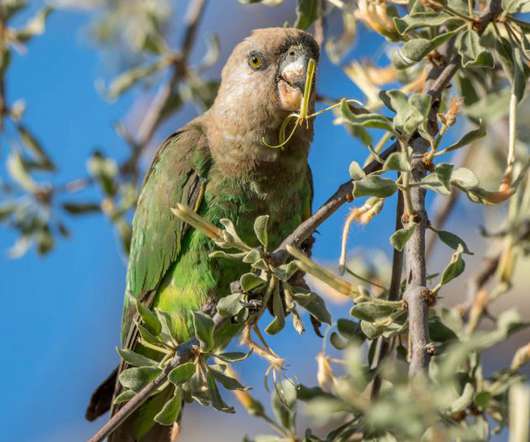Some Ingenuity Can Go a Long Way
10,000 Birds
AUGUST 28, 2014
Among birds the Egyptian Vulture uses rocks to crack Ostrich eggs, the New Caledonian Crow and Woodpecker Finch (one of several Darwin Finches of the Galapagos Islands), uses sticks to extract grubs from inside a branch. This is similar to the fact that all birds, even first time breeders within a species build identical nests.












Let's personalize your content